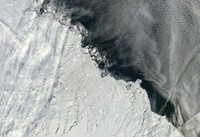Advertisement
Grab your lab coat. Let's get started
Welcome!
Welcome!
Create an account below to get 6 C&EN articles per month, receive newsletters and more - all free.
It seems this is your first time logging in online. Please enter the following information to continue.
As an ACS member you automatically get access to this site. All we need is few more details to create your reading experience.
Not you? Sign in with a different account.
Not you? Sign in with a different account.
ERROR 1
ERROR 1
ERROR 2
ERROR 2
ERROR 2
ERROR 2
ERROR 2
Password and Confirm password must match.
If you have an ACS member number, please enter it here so we can link this account to your membership. (optional)
ERROR 2
ACS values your privacy. By submitting your information, you are gaining access to C&EN and subscribing to our weekly newsletter. We use the information you provide to make your reading experience better, and we will never sell your data to third party members.
Environment
Welcome To The Anthropocene
by Rudy Baum
February 4, 2008
| A version of this story appeared in
Volume 86, Issue 5
GEOLOGICALLY, we are living in the Holocene epoch of the Quaternary period. However, use of the term "Anthropocene" to denote a new geological epoch in which geology and ecology are strongly influenced by human activities was first proposed in 2000 by Paul J. Crutzen, an atmospheric chemist and Nobel Prize winner at the Max Planck Institute for Chemistry, and Eugene F. Stoermer, of the University of Michigan.
In a subsequent paper in Nature entitled "Geology of Mankind," Crutzen wrote: "It seems appropriate to assign the term 'Anthropocene' to the present, in many ways human-dominated, geological epoch, supplementing the Holocene—the warm period of the past 10–12 millennia" (2002, 415, 23).
Now, the Stratigraphy Commission of the Geological Society of London formally addresses whether the Anthropocene should be considered a true geological epoch (GSA Today 2008, 18, 4). Jan Zalasiewicz and Mark Williams, geologists at the University of Leicester, in England, and coworkers write of the term Anthropocene: "A case can be made for its consideration as a formal epoch in that, since the start of the Industrial Revolution, Earth has endured changes sufficient to leave a global stratigraphic signature distinct from that of the Holocene ... encompassing novel biotic, sedimentary, and geochemical change. These changes, although likely only in their initial phases, are sufficiently distinct and robustly established for suggestions of a Holocene-Anthropocene boundary in the recent historical past to be geologically reasonable."
Although human activity can be detected in Holocene strata, "it did not create new, global environmental conditions that could translate into a fundamentally different stratigraphic signal," the geologists write. Since the beginning of the Industrial Revolution, however, the human population has climbed from fewer than 1 billion to its current 6.5 billion, and the exploitation of coal, oil, and gas has enabled planetwide industrialization, construction, and mass transport, all of which is likely to result in distinct signatures in the geological record.
Climate change is likely to leave a geological footprint. While humans have caused species' extinction in the past, the rate of extinctions is increasing dramatically, so much so that "the rate of biotic change may produce a major extinction event analogous to those that took place at the K-T boundary and elsewhere in the stratigraphic column." The geologists continue: "The combination of extinctions, global species migrations, and the widespread replacement of natural vegetation with agricultural monocultures is producing a distinctive contemporary biostratigraphic signal."
Sea level rise and ocean acidification due to global warming and ocean absorption of CO2 also will leave their mark in the geological record.
"The preceding discussion makes clear that we have entered a distinctive phase of Earth's evolution that satisfies geologists' criteria for its recognition as a distinctive stratigraphic unit," the geologists conclude.
In point of fact, the changes that are occurring could be even more significant. "It is true that the long-term consequences of anthropogenic change might be of sufficient magnitude to precipitate the return of Tertiary levels of ice volume, sea level, and global temperature that may then persist over several [100,000-year] cycles. This, especially in combination with a major extinction event, would effectively bring the Quaternary period to an end," the geologists write. They are not, however, ready to go quite that far, writing, "Thus, while there is strong evidence to suggest that we are no longer living in the Holocene ... it is too early to state whether or not the Quaternary has come to an end."
In his 2002 Nature essay, Crutzen concludes: "Unless there is a global catastrophe ... mankind will remain a major environmental force for many millennia. A daunting task lies ahead for scientists and engineers to guide society towards environmentally sustainable management during the era of the Anthropocene. This will require appropriate human behaviour at all scales, and may well involve internationally accepted, large-scale geo-engineering projects, for instance to 'optimize' climate."
Thanks for reading.
Views expressed on this page are those of the author and not necessarily those of ACS.






Join the conversation
Contact the reporter
Submit a Letter to the Editor for publication
Engage with us on Twitter